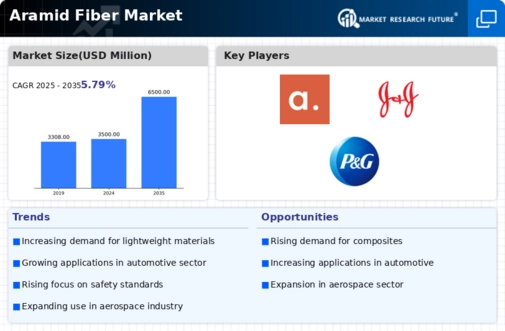Market Analysis
In-depth Analysis of Aramid Fiber Market Industry Landscape
The Aramid Fiber market is currently experiencing dynamic shifts driven by a combination of factors that span technological advancements, increasing demand in end-use industries, and global economic trends. Aramid fibers, known for their exceptional strength and heat resistance, find applications in a diverse range of sectors, including aerospace, automotive, defense, and industrial applications.
One significant market dynamic is the growing emphasis on lightweight and high-performance materials in industries like aerospace and automotive. Aramid fibers, with their remarkable strength-to-weight ratio, are gaining traction as a preferred choice for manufacturers seeking to reduce overall vehicle weight while maintaining structural integrity. This trend is aligned with the broader push towards fuel efficiency and sustainability, as lighter materials contribute to improved fuel efficiency and reduced carbon emissions.
The defense sector also plays a crucial role in shaping the market dynamics of Aramid fibers. The need for advanced materials with exceptional ballistic and impact resistance is driving the demand for Aramid fibers in military applications, such as body armor and ballistic protection. As global security concerns persist, defense budgets allocate resources for state-of-the-art protective gear, further propelling the growth of the Aramid Fiber market.
Moreover, the industrial sector is witnessing a surge in the adoption of Aramid fibers for various applications, including conveyor belts, hoses, and cables. The inherent properties of Aramid fibers, such as resistance to abrasion and chemicals, make them well-suited for these industrial applications. As industries worldwide focus on enhancing operational efficiency and safety standards, the demand for Aramid fibers is expected to witness steady growth.
Market dynamics are also influenced by technological advancements in Aramid fiber production. Ongoing research and development activities are aimed at improving the manufacturing processes to enhance the performance characteristics of Aramid fibers. Innovations in spinning techniques, polymer chemistry, and composite materials contribute to the continuous evolution of Aramid fibers, opening up new possibilities for applications across diverse industries.
Global economic conditions and trade dynamics also have a significant impact on the Aramid Fiber market. Fluctuations in raw material prices, geopolitical factors, and trade policies can influence the overall supply chain and pricing strategies adopted by key market players. Companies operating in the Aramid Fiber market must navigate these external factors to maintain competitiveness and ensure stable market growth.











Leave a Comment